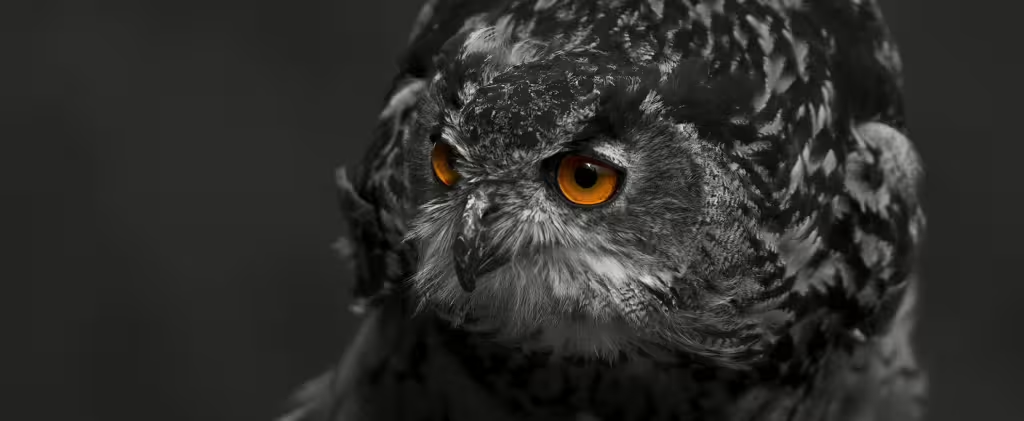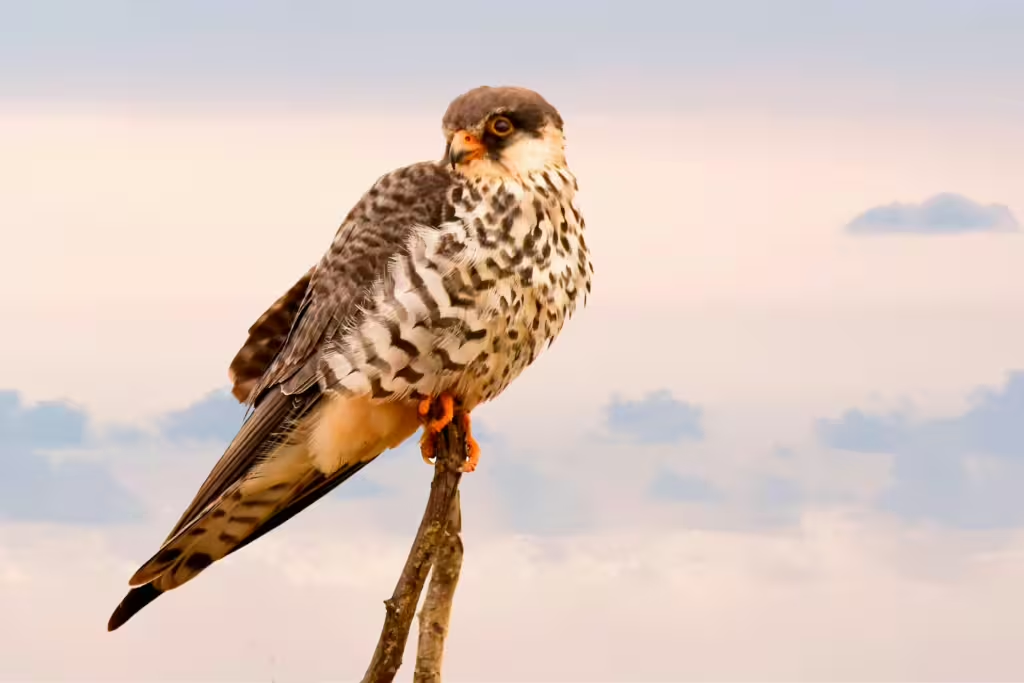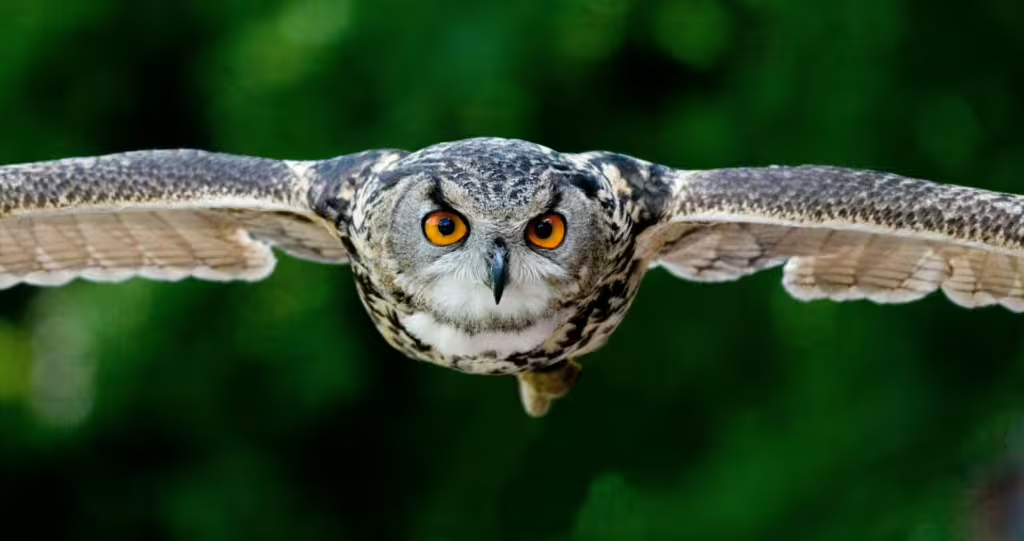There are many creatures on our planet that are able to defy gravity. A few of them, do so in sporadic bursts, gliding from place to place in brief or subtle ways. Others, like insects, hum along on supersonic wings, some so fast that they can fly inside fast moving vehicles without ending up a stain on the windshield. There are birds who can soar across entire oceans, their immense wingspans keeping them aloft and out of harms way for days at a clip. Finally, there are those birds that are capable of skilled, silent flights, hunters whose precision and deadly efficiency is unparalleled in the animal kingdom.
Most of these avian aeronauts are part of the raptor family, a group of airborne apex hunters that display some of the most impressive predatory adaptations in all of creation thus far. These birds roost alongside nature’s most formidable predators from throughout the planet’s long history. They employ unequalled stealth, unparalleled speed, and remarkable intelligence in order to outmaneuver their prey.
In this article, we will discuss the silent and the skilled, the ghostly flights of owls, to the breathtaking dives of peregrine falcons. By the end, you too will se why the world of avian hunters is so mysterious and awe-inspiring.
The Apex Predators of the Sky
Birds of prey are part of a pretty exclusive club of avian hunters that have evolved some rather exceptional physical and behavioral adaptations. These rare traits have managed to secure the birds a place at the top of the food chain, and we’re not just talking spatially. Birds of prey have remarkable eyesight, sharp claws and beaks, impressive flight capabilities, and other enhanced senses and physical attributes that have enabled them to ascend far above even some of the most accomplished terrestrial predators.
Otherswise known as raptors, birds of prey include species from the orders Accipitriformes (hawks, eagles, and kites), Falconiformes (falcons and caracaras), and Strigiformes (owls) families. Each of these unique differentiations possesses a unique hunting style that reflects the ecological niche they occupy. As we mentioned earlier, the common physical traits of all raptor species include sharp talons, hooked beaks, and extraordinary vision, but there are distinct differences among them. These differences have more to do with their habitat and prey animals than anything else, but all of them contribute to their prowess as hunters.
Additionally, the hunting abilities of these birds have been honed over millions of years of evolution, way back to when they themselves were mostly terrestrial hunters. Nevertheless, these abilities have allowed them to efficiently capture prey that is often agile and elusive. This means that competing predators don’t have a chance of horning in on their prey territory. Thus, raptors are some of the most highly specialized hunters in the animal kingdom. Despite their powerful predatory skills, raptors are not immune to the ecological challenges that so many other animals and plants face in this modern world. Increasing threats from habitat destruction, climate change, and human interference have made it so that only the most effective or even, extreme conservation efforts will ensure their continued survival.
The Art of Silent Flight: Owls
Nature and bird enthusiasts might have already guessed what our first entry on this list would be, but even the uninitiated could probably guess that owls would top the charts when it came to silent hunting. When it comes to the raptor family, owls are the undisputed masters of stealth. These birds have remarkable adaptations that allow them to hunt with near-complete silence, enabling them to catch unsuspecting prey with ease. Their preferred food sources include primarily small mammals and birds, which they hunt under the cover of darkness. Owls are nocturnal specialists, using their finely tuned senses to detect and capture prey in the dead of night. Since this a time when many other predators are inactive, it allows the owl to exploit a niche that few other hunters can access, thus making them dominant nocturnal predators.
Specialized Feathers
Unlike other raptors, owls feathers are soft and fringed, an adaptation that allows them to disrupt airflow, which effectively dampens sound. The end-result of this is that owls can fly without making so much as a whisper. Owls also possess broader wings than some other raptors, an adaptation that enables slower, more controlled flight. The poor rodent who is on the receiving end of this strike likely won’t even be aware of the impending attack until it’s far too late. Another facet of the owl’s flight adaptation is the face that the leading edges of their feathers have comb-like structures, designed to break up turbulence and reduce noise even further. Silent flight allows owls to swoop down on prey undetected, which gives them a huge advantage over other nighttime predators that rely on speed and brute force to capture prey.

Asymmetrical Ears and Exceptional Hearing
Many owl species, such as the barn owl, possess asymmetrical ear placements. Some readers might be thinking, “well, how does that help?” It’s actually a rather clever adaptation, in fact. These misplaced earholes grant the owl the ability to pinpoint the exact location of prey with extraordinary accuracy. This advanced hearing also enables them to hunt even in complete darkness, relying entirely on sound to locate and strike their target when eyesight fails. Owls also have the ability to detect minute sounds, such as the movement of a rodent beneath a layer of snow or leaves; an astonishing evolutionary trait that is unparalleled in the raptor family. Believe it or not, even the owl’s head shape is part of their remarkable hearing ability. An owl’s facial disc helps to funnel sound towards their ears, further improving their already impressive auditory capabilities.
Night Vision Advantage
Owls have disproportionately large eyes for their heads. Those eyes are packed with light-sensitive cells, providing them with superior night vision. The also possess fixed eye sockets, an unusual trait that means they must rotate their heads to change their field of vision. This feat is made possible by the owl’s remarkable ability to turn their heads up to 270 degrees. Another strange but incredible facet of the owl’s vision is that it is specially adapted to detect movement in low-light conditions. This makes it easier for the owl to spot prey even in near-total darkness, thus allowing them to remain efficient hunters even in the darkest of nights. In short, so long as the owl has eyes to see, it will never miss an opportunity to strike.
Speed Demons: Falcons
While owls rely on silence, falcons dominate the skies with unparalleled speed and agility. The peregrine falcon, often hailed as the fastest animal on Earth, is a prime example of extreme aerial efficiency. Falcons have evolved to become master aerial hunters, capable of chasing down and capturing prey in mid-air with astonishing precision. Their streamlined bodies and powerful flight muscles make them unmatched in speed and agility, allowing them to pursue even the most evasive targets.
The Peregrine Falcon’s Deadly Dive
Peregrine falcons employ a remarkable hunting strategy known as a “stoop.” This strategy involves the bird diving at their target prey at high speeds from great heights. They will often strike their prey in mid-air, reaching speeds of over 240 mph while delivering a bone-shattering impact to other unsuspecting birds. The falcon’s ability to control its descent and adjust its trajectory mid-dive makes it one of the most highly efficient predators in the sky.
Keen Eyesight
Falcons have some of the most acute vision in the animal kingdom, though they are not designed to see at night like the owl. Nevertheless, it is estimated that they can see things eight times sharper than a human can. This adaptation enables the falcon to spot prey from miles away, ensuring that its attacks are swift and deadly.
The Strength and Strategy of Eagles
Eagles are among the most powerful birds of prey but it isn’t just about their strength. These birds are equally known for their intelligence, and strategic hunting techniques. As apex predators, eagles are often forced to take down larger prey animals, feeding on everything from mammals and reptiles, to fish and even other birds. Their immense size and power allow them to dominate their environment, but their other skills compound these traits to help them dominate their environments.
The Bald Eagle’s Fishing Expertise
The bald eagle has long been a symbol of power and resilience. This iconic avian is also a masterful fisherman. Using its keen eyesight, bald eagles scan vast bodies of water for fish before executing a swift and calculated snatch with its sharp talons. These birds have a grip strength measured at over 400 psi, allowing them to not only firmly grasp and lift fairly heavy prey, but to potentially crush it on their way to finding a place to eat it. Bald eagles are also pretty resourceful and have been known to steal food from other birds or other, smaller hunting animals.
The Golden Eagle’s Versatility

Golden eagles are some of the most versatile hunters on the planet. These mighty birds are strong and capable enough to prey on animals as large as deer fawns and foxes. Surprisingly, these birds also employ cooperative hunting strategies, with pairs of golden eagles working together to take down larger prey. This isn’t all that hard, really, as their immense wingspan and powerful talons allow them to tackle formidable opponents of all shapes and apparently, all sizes.
Superior Intelligence
Eagles are quite clever. They aren’t as intelligent as say corvids or parrots, but many species of eagle exhibit high levels of intelligence. Eagles often hunt using calculated approaches to overcome the defenses of their prey. Even as far back as ancient times, people have observed eagles dropping turtles onto rocks to crack their shells. Others have seen them using their talons to knock animals off cliffs so that they can swoop in after and clean up the carrion. The eagles’ ability to assess situations and adjust their strategies accordingly makes them some of the most effective hunters in the bird world.
Coordinated Attackers: Harris’s Hawks
We’re willing to bet that a few of our readers have never heard of the Harris’s hawk. We’re not surprised, these animals don’t appear in the who’s who of the animal kingdom like some other birds on this list. Still, popularity notwithstanding, these radical raptors are unlike any of their ilk, and are therefore worthy of examination. While most raptors hunt alone, Harris’s hawks employ a unique mix of cooperative hunting strategies, making them some of the most intelligent avian predators around.
Teamwork in the Desert
Found primarily in dry or arid environments, Harris’s hawks hunt as a team. They seek out and attack prey in coordinated groups, taking turns chasing and exhausting the prey animal before one of them delivers the final, killing blow. This strategy increases the hunting success of all associated parties, allowing them to take down larger or more elusive prey than any solitary hunter could manage on their own.
Social Intelligence
This communal hunting behavior is not unusual if one looks into the way Harris’s hawks interact with the other members of their species. These birds display strong social bonds, not commonly found in other raptors. Not only do members of the group working together to hunt, they also help to protect one another from threats and share food resources with one another.

True Investigator Says…
As you can see, the world’s best avian hunters have perfected the art of predation to a point that most other predators might as well give up the whole thing entirely. Through a combination of stealth, speed, strength, and intelligence, these remarkable raptors absolutely own the skies. Whether it’s the owls’ uncanny stealth and senses that allow them to dominate the night, the Harris’s hawks’ ability to work as a team, the falcons’ unparalleled speed and agility, or the eagles’ raw power and strategic prowess; these birds mean business. Each of these avian predators have evolved to become the apex hunters of their respective environments, all-but-ensuring their place at the top of the food chain.
Raptors are living representations of nature’s incredible ingenuity, and as we continue to study and admire these silent hunters, we gain a deeper appreciation for the delicate balance of ecosystems and the roles these magnificent birds play in maintaining them.
Discover more from TrueInvestigator
Subscribe to get the latest posts sent to your email.


